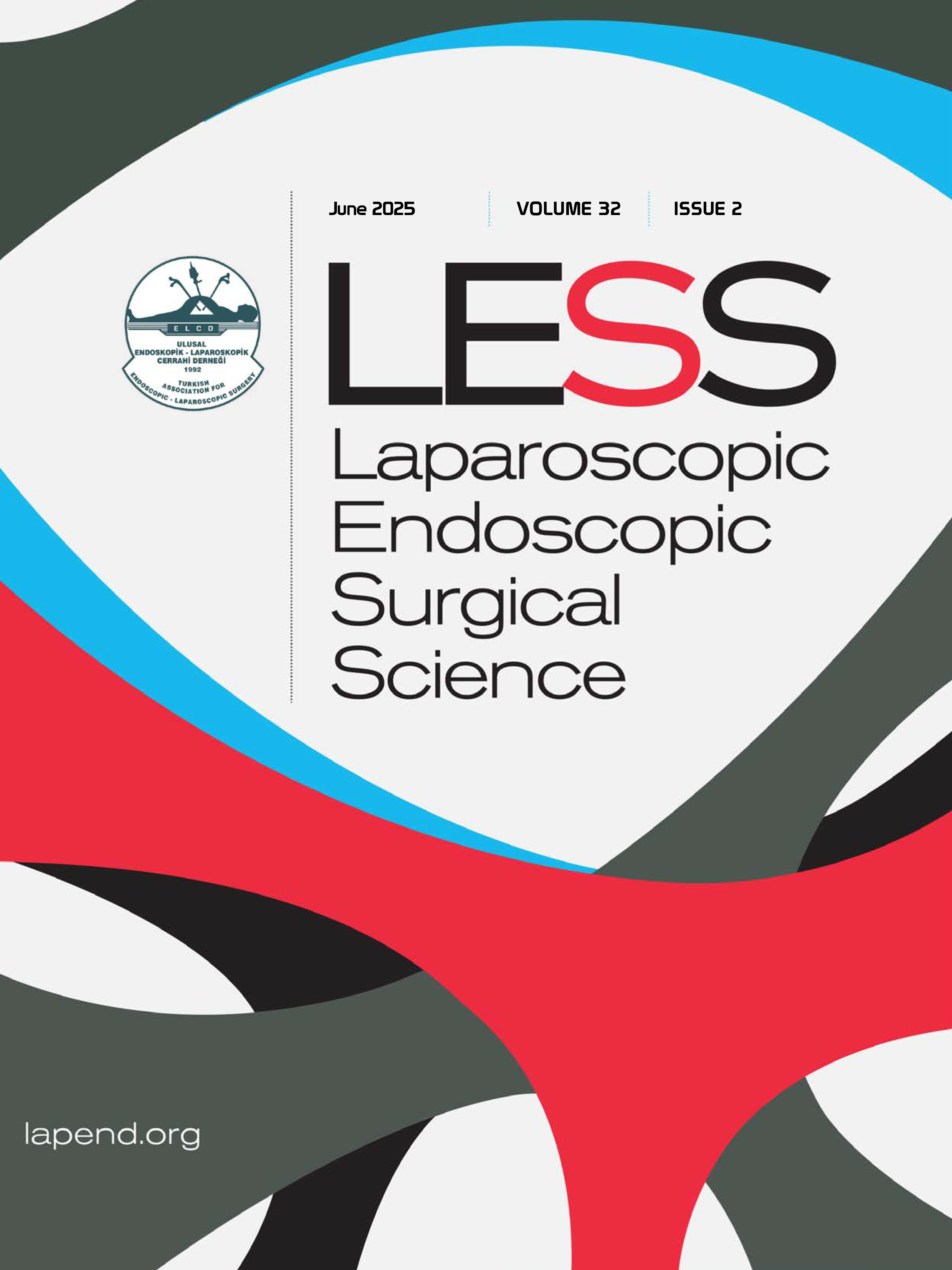Use of the laparoscopic protective drape mechanism: A prospective comparative study of 60 patients
Betül Güzelyüz1, Mehmet Faik Özçelik2, Engin Hatipoğlu2, Egemen Özdemir2, Sefa Ergün2, Server Sezgin Uludağ21Department of General Surgery, Kahramanmaras Afsin State Hospital, Kahramanmaras, Türkiye2Department of General Surgery, Istanbul University-Cerrahpasa, Cerrahpasa Faculty of Medicine, Istanbul, Türkiye
INTRODUCTION: This study aims to reveal the use and advantages of the laparoscopic protective drape mechanism, designed to prevent contamination in minimally invasive surgeries.
METHODS: The laparoscopic protective drape is formed by passing a surgical thread around the circular transparent polyurethane material. It prevents intra-abdominal contamination by laying on the operation area from the trocar; then, it is taken out of the abdomen by pulling the thread. The findings were evaluated by comparing two groups. According to G*Power (v3.1.7) analysis, a total of 60 laparoscopic cholecystectomy-appendectomy cases were examined. IBM SPSS Statistics 26 (IBM SPSS, Türkiye) was used. Significance was evaluated at the p<0.05 level.
RESULTS: The material was found useful in 76.67% (n=23) of the cases in which it was used. Preoperative and perioperative findings were similar (p>0.05). In the group in which the material was used, peristalsis was more frequent, drain usage was lower, and the hospital stay was shorter (p=0.001, p=0.001). The decrease in temperature and CRP, and an increase in CRP for those who didnt use the material, were significant (p=0.001; p=0.013).
DISCUSSION AND CONCLUSION: The laparoscopic protective drape, designed to prevent contamination in minimally invasive surgeries, is expected to reduce intra-abdominal infectious complications, drain use, postoperative ileus, and shorten hospital stays. It is predicted that it will reduce outcomes such as tumor implantation.
Manuscript Language: English















